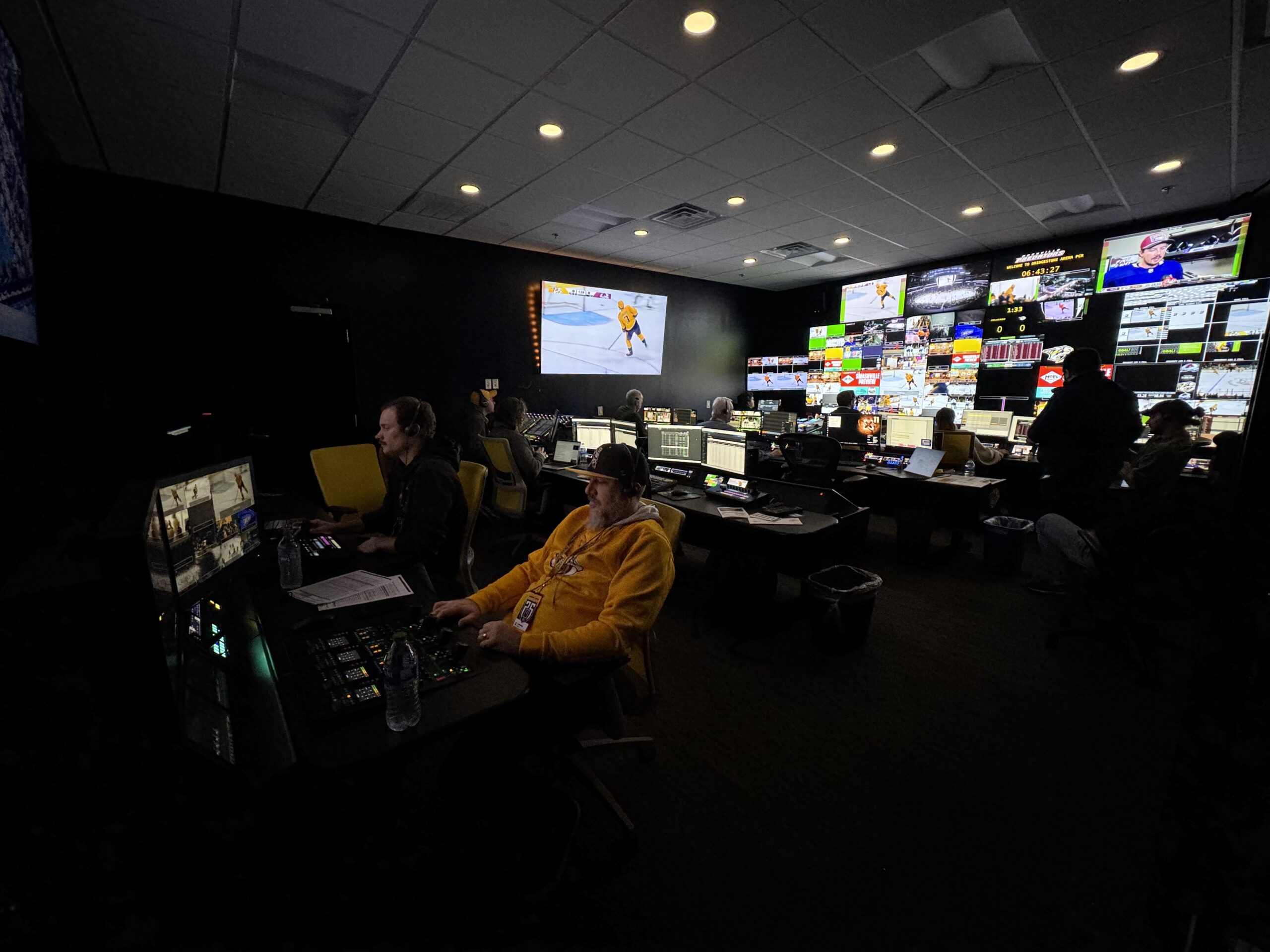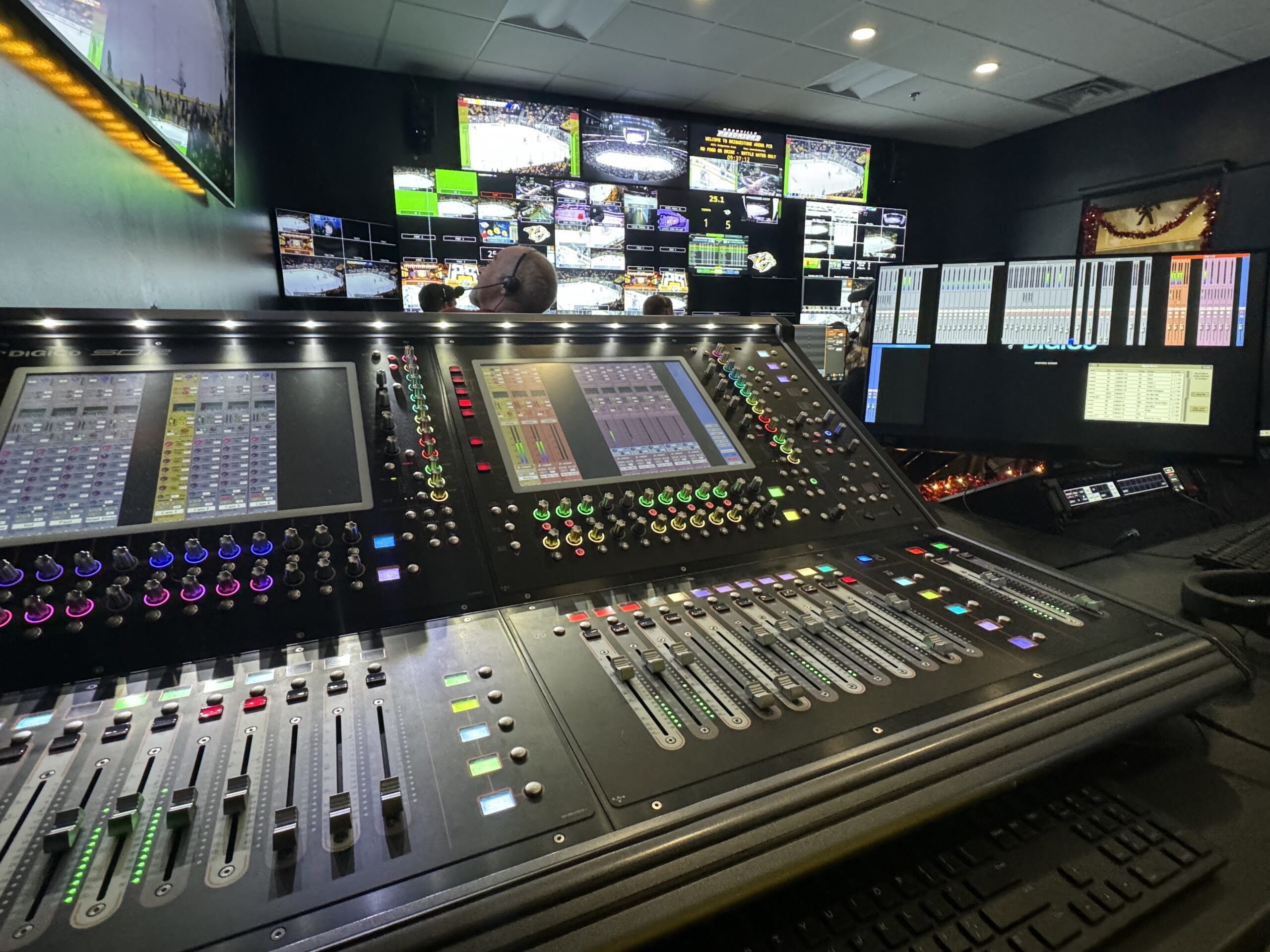A Year After Catastrophic Flooding, Bridgestone Arena Is Back
Recovery was accomplished without the cancellation of a single event
Story Highlights
Thanksgiving 2022 was anything but a day of thanks for the Bridgestone Arena, home to the NHL Nashville Predators. In the early-morning hours, a water main broke, pouring an estimated 2 million-plus gallons of water into the production and event levels of the downtown venue, inundating the broadcast-control room and TOC spaces, and damaging and, in some cases, ruining broadcast and live AV systems and equipment. Water sat 3 ft. deep in some spots and caused some melt damage to the hockey ice.
Twelve months later, the venue — which Pollstar describes as the busiest arena in the world — and its staff are finally through the long recovery, which they accomplished without missing a single game or other event.
“My Chief Engineer Stephen Hart was on his way in when [the water main] broke,” Jacob Lutz, director, technical operations, Nashville Predators, said at the time of the flood. “He called me to say we had 3-6 ft. of standing water in the control room and operations center. I knew we were in trouble.”
Today he says, “Since then, we did an NHL draft, the NHL Awards, a Monster Jam, and an SEC tournament, and we won the NHL Stanley Cup for game presentation of the year. It’s because of the people,” he explains. “The equipment makes your life easier, but the dedication of our people is the reason we won and still did all that and, frankly, the reason the NHL still trusted us to host these marquee events and do these great things.”
Suppliers Help Out
Immediately after the flood, the Bridgestone turned to its vendors: notably Evertz, Ross, integration/design-consulting partner Anthony James Partners (AJP), CTI, LMG/TNDV, and Lyon Video. A quickly updated iteration of the Lyon-17 mobile unit became the venue’s production lifeboat, cabled to a quickly constructed temporary TOC. All the games and events, and more, were managed from the makeshift pop-up shop.
“LMG/TNDV basically gutted the truck and rebuilt it with equipment they had,” Lutz explains. “Then we rolled it in and cabled it up. We had pretty much outboarded the Miranda router that we used for all of our distribution throughout the house. Throughout the facility, we were running off a Ross Ultrix router inside the truck for multiviewers and switcher sources and EVS, with a Miranda router for all distribution throughout the truck.

The renovated control room at Bridgestone Area uses a combination of new and lightly used gear procured following the flood.
“All of our LEDs,” he continues, “were riding a NEXX router that we were able to get in and get commissioned from Evertz within our temporary TOC. We ran 144 strands of fiber-optic cable between the TV truck, and that TOC moved all of our OLED for all of our existing fiber-optic cable to the TV truck, and that temp TOC moved all of our LED processing and all of our existing fibers out of the building into that temporary space. We had a Ross Xpression Tessera system in the temporary TOC, and we were fortunate that [Ross Video Project Manager/Solution Specialist, Sports and Live Events,] Stefan Tribble was able to come down and help us build it out; Ross has experience building temporary solutions in places like the Super Bowl or the NFL Draft and things like that.”
Lutz credits Evertz for flying in staff from Canada to commission a new NEXX router and to restore full functionality to the facility by providing a loaner DreamCatcher system. A new DreamCatcher platform built and installed long term further enhances the team’s live-production capabilities.
“Once we got into the actual new long-term control room, we’re still working with [Evertz] just to make sure everything is exactly as it should be,” he says, adding that temporary power was run from a quadrant of the building unaffected by the flood. “We’re mixing a combination of new and lightly used gear that was procured during the [recovery] to make it all work, and they’ve been nothing but helpful and an incredible partner in this entire process.”
Rebuilding in the Facility
The arena’s existing control room was barely three years old at the time of the flood. That made its loss that much harder to accept but also provided a solid foundation from which to rebuild. Insurance coverage, Lutz says, called for a “like-kind-and-quality” replacement basis, so the team had to apply that formula to every technical decision, something they navigated adroitly. During the pandemic, he notes, the rate of technical change in the broadcast business accelerated significantly, and that helped in making critical decisions about which production platforms to choose to rebuild and which to start with fresh.

Telestream Prism cloud-based video encoding/transcoding service system and an updated Evertz DreamCatcher BRAVO system are among the new platforms in the renovated TOC. The team says they reduce the workload on the staff and physical footprint of servers in the TOC while enabling new features for venue and broadcast graphics.
“The technology had advanced so far and everything has changed so much, that basically opened a brand-new door,” he says. “We worked with AJP and CTI on both the temporary and permanent TOCs to make sure everything we did was based on being cost-effective and efficient, but that also kept us at the cutting edge.”
One example is the shift from a Riedel Artist 64-frame intercom system, which he says was nearing the end of its product life, to a 1024-frame version with MADI- and AES67-conversion capability.
“We were able to interface [it] throughout the entire venue network, so we were able to bridge old and new [technology] as we were bringing up the new control room,” Lutz explains, adding that a similar process took place with a Ross FR12 Ultrix Acuity switcher.
On the audio side, the Bridgestone replaced its two DiGiCo SD12 consoles — one of which was literally at ground zero for the burst pipe that precipitated the flood — and added a third, a Quantum338 desk, which is now used as front-of-house mixer, with two other SD 12s for broadcast production (as a router and hub) and as a utility monitoring worksurface. They are all on a single-core Optocore fiber loop, along with the SD, Nano, and Mini racks used as I/Os for such sources as ice microphones. Two Orange Boxes use MADI interfaces.
Some of the technology choices helped reduce infrastructure, in the process limiting costs and increasing production flexibility. Lutz cites the Telestream Prism cloud-based video-encoding/transcoding–service system that AJP recommended. Like the updated DreamCatcher Bravo system, he says, it reduces the workload on the staff and the physical footprint of servers in the TOC while enabling new features for venue and broadcast graphics.

One of two replacement DiGiCo SD12 consoles at Bridgestone Arena. One of the original consoles was at ground zero for the burst pipe that precipitated the flood.
“It’s going to allow our operators to have much more flexibility to be able to build out their shows remotely when necessary,” he says, “and it gives us monitoring capabilities that are unmatched simply because it allows us to monitor our system from anywhere, helps increase efficiency, and helps with the longevity of the facility.
Roadmap to Recovery
If there was a roadmap for all of this, says Lutz, it was to follow a “natural progression” of technology and product evolution, with new platforms replacing the functionality of damaged ones while enhancing that functionality in cost-efficient and cost-effective ways.
Interestingly, that roadmap stopped at the ST 2110 IP standards, at least for now.
“We did have the conversation on going full 2110 and making the investment; it was a real conversation and a real thing,” he says. “[But we knew] that it was not the right thing for our facility at this time and that sticking with a baseband system for the price point and for how we utilize our facility is probably the smart move. That being said, we did make sure that we have the capabilities to upgrade to 2110 whenever it’s time for us to do it, especially as more equipment starts coming up over the next several years.
“We’re just very glad we were able to come as far as we did, as quickly as we did after the flood,” he continues. “It was quite a ride.”
